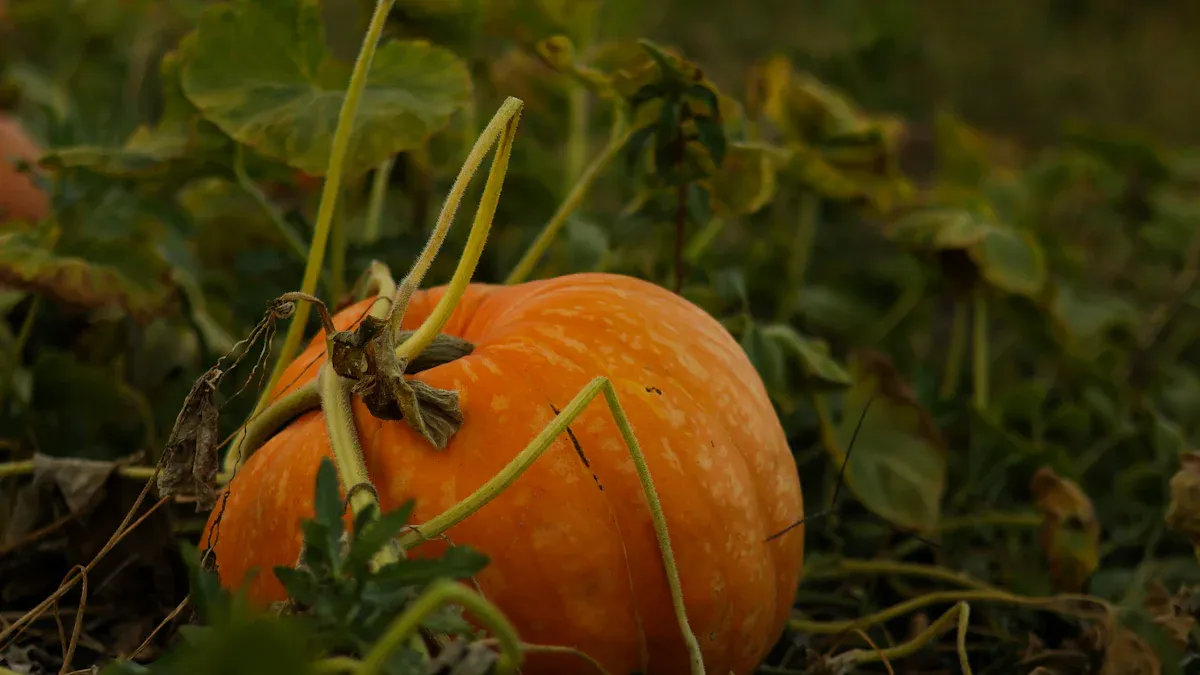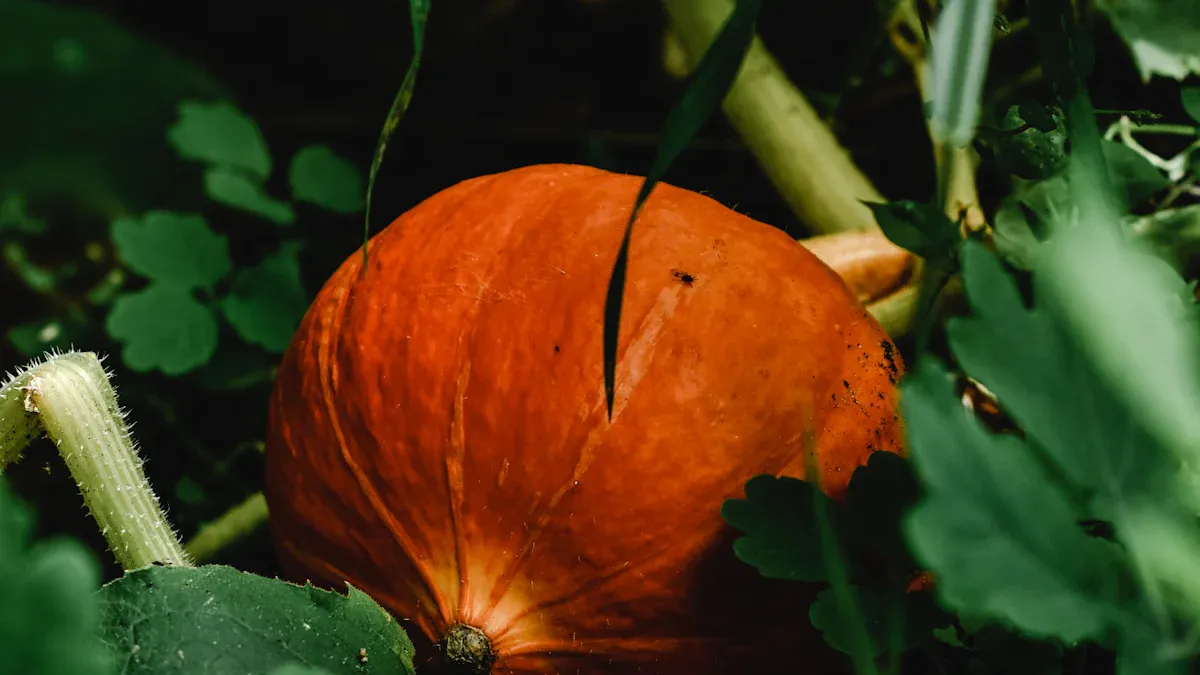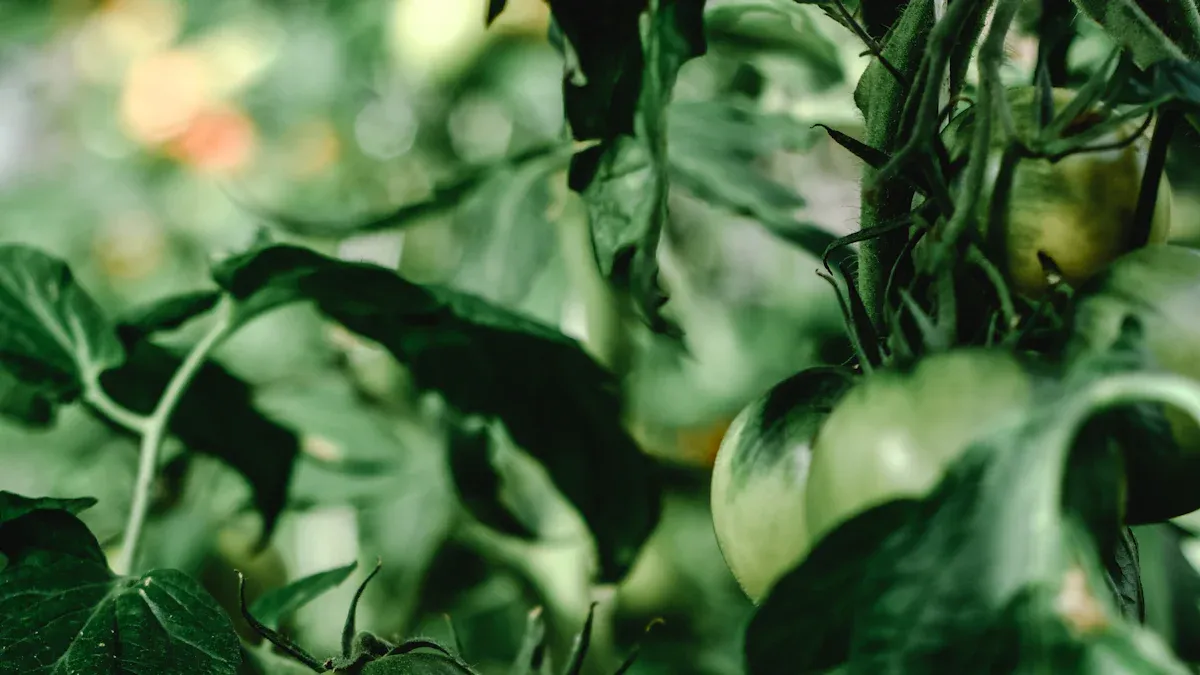
Recognizing and treating squash plant diseases is crucial for your garden’s success. These diseases can significantly affect plant health and yield. For instance, powdery mildew can cause a loss of 20% to 40% in yield. By managing these issues proactively, you can keep your plants thriving and productive.
Key Takeaways
Identify squash diseases early to prevent significant damage. Look for symptoms like yellow-brown spots or wilting leaves.
Implement preventive measures such as crop rotation and proper watering to keep your squash plants healthy.
Use organic treatments and best practices to manage pests and diseases without harsh chemicals.
Common Squash Diseases

When it comes to squash plant diseases, a few culprits often cause trouble in your garden. Understanding these common diseases can help you take action before they wreak havoc on your plants. Let’s dive into some of the most prevalent issues you might encounter.
Powdery Mildew
Powdery mildew is a fungal disease that can quickly spread across your squash plants. You’ll notice small, white, powdery spots on the leaves, which can eventually cover the entire plant. This disease thrives in warm, dry conditions, especially when humidity levels are high.
Tip: To identify powdery mildew early, look for those dusty spots on young leaves. If you wipe them with your fingertip and the dust rubs off easily, it’s likely mildew.
The fungi responsible for this disease, such as Golovinomyces cucurbitacearum, thrive between 50°F and 90°F. To manage powdery mildew, consider these strategies:
Prune crowded leaves to improve airflow.
Avoid overhead watering to keep leaves dry.
Apply organic fungicides if the problem persists.
Downy Mildew
Downy mildew is another serious threat to your squash plants. This disease manifests as angular yellow to brown lesions on the upper leaf surface, often accompanied by gray mold on the underside. It flourishes in cool, moist conditions, making it a common issue during humid weather.
Disease | Symptoms |
|---|---|
Downy Mildew | Angular, yellow to brown lesions on upper leaf surface, restricted by leaf veins. Gray mold on lower leaf surface. |
To combat downy mildew, you can:
Ensure proper spacing between plants to improve air circulation.
Water early in the day to allow leaves to dry quickly.
Use fungicides as a last resort if the disease spreads.
Squash Bugs
Squash bugs are notorious pests that can cause significant damage to your plants. They feed on the sap of squash leaves, leading to wilting and yellowing. These bugs can also transmit diseases like cucurbit yellow vine disease, which can be fatal to your plants.
Lifecycle: Squash bugs go through a lifecycle of eggs, nymphs, and adults in about 6 to 8 weeks. They can produce multiple generations in a single season.
To control squash bugs, consider these methods:
Hand-pick bugs from the undersides of leaves.
Use row covers to protect young plants.
Practice crop rotation to disrupt their lifecycle.
Blossom End Rot
Blossom end rot is a physiological disorder rather than a disease, but it can be just as damaging. You’ll notice dark, sunken spots at the blossom end of your squash fruits. This condition often results from calcium deficiency, which can occur due to inconsistent watering or drought stress.
Symptoms of Blossom End Rot | Symptoms of Poor Pollination |
|---|---|
Water-soaked, light tan spot at the blossom end | Yellowing and shriveling of fruit |
Spot enlarges to dark brown or black | Brown or black appearance at flower end |
To prevent blossom end rot, ensure consistent watering and consider adding calcium supplements to your soil. You can also use crushed eggshells as a natural remedy.
By recognizing these common squash diseases and implementing effective management strategies, you can keep your plants healthy and productive. Remember, early detection is key!
Symptoms of Squash Plant Diseases

Yellow-Brown Spots
When you spot yellow-brown spots on your squash leaves, it’s time to pay attention. These spots can indicate various issues, from pests to fungal diseases. For example, small yellow-green or white spots may appear, often leading to tattered or scorched leaves. This symptom can arise from squash bugs, which suck the sap from the leaves.
Symptoms Description | Cause |
|---|---|
Small yellow-green or white spots on leaves; leaves may appear tattered, yellow, or scorched. | Squash bugs (Anasa tristis) |
Leaf distortion, elongated leaves, irregular yellow markings or mosaic patterns. | Various viruses (e.g., SqMV, YZMV, CMV) |
Brown spots, angular in shape, pale-green then yellow on upper surface. | Fungal infection |
If you notice these symptoms on leaves, act quickly. Early detection allows you to manage the problem before it spreads. For instance, if you see brown spots with a yellow halo, it could be a sign of a fungal infection. Identifying these symptoms early can help you take action and protect your plants.
Wilting and Rotting
Wilting and rotting are serious symptoms that can signal trouble for your squash plants. You might notice leaves drooping or turning mushy. This can happen due to several factors, including blossom end rot, which results from a calcium deficiency in developing fruit. Other causes include soilborne pathogens like Phytophthora crown rot, which can lead to rapid decline, especially in poorly drained soils.
Blossom end rot is a physiological disorder caused by a lack of calcium in developing fruit.
Low soil pH can exacerbate this issue, making calcium less available to plants.
Plant stress from temperature extremes, drought, or wet soil conditions can also lead to wilting and rotting.
Recognizing these symptoms early is crucial. It allows you to implement timely interventions, such as adjusting your watering practices or applying calcium supplements. You can also use organic mulches to reduce soil contact with fruit, helping to prevent further issues.
Patchy Areas
Patchy areas on your squash plants can indicate the presence of disease. These areas may appear as irregular spots or discoloration on the leaves. For example, anthracnose can cause leaves to turn brown in a spotty pattern, while downy mildew may show yellowing or brown spots, often visible on the leaves.
Disease | Symptoms |
|---|---|
Anthracnose | Leaves turn brown in a spotty pattern. |
Downy Mildew | Yellowing or brown spots, visible on leaves. |
Powdery Mildew | Powdery white appearance on leaves. |
To distinguish between disease-related patchy areas and those caused by environmental stress, look for specific signs. Plant diseases are caused by infectious agents like fungi, bacteria, and viruses, leading to observable symptoms. In contrast, environmental stressors can cause similar symptoms but are not contagious. Symptoms of environmental stress include leaf yellowing and poor vigor, indicating issues with soil moisture, light, or temperature.
By staying vigilant and recognizing these symptoms on leaves, you can take proactive steps to manage squash plant diseases effectively.
Treatment & Prevention of Common Problems
When it comes to managing squash plant diseases, you have several options for treatment and prevention. Let’s explore some effective strategies.
Organic Treatments
Organic treatments can be a great way to manage common problems without harsh chemicals. Here are some advantages and limitations of using organic methods:
Advantages of Organic Treatments | Limitations of Organic Treatments |
|---|---|
Use of mechanical practices like barriers and traps to control pests. | Labor-intensive methods may be uneconomical for large plantings. |
Effective control methods such as mulching and row covers. | Certain treatments may be ineffective under heavy pest infestations. |
Encouragement of beneficial predators and parasites. | Requires careful timing for application of treatments. |
Use of approved organic materials like neem oil and diatomaceous earth. | Dependence on early cultural controls rather than reactive measures. |
Chemical Treatments
In some cases, you might need to resort to chemical treatments for severe squash plant diseases. Here’s a quick reference for effective treatments:
Disease | Treatment |
|---|---|
Phytophthora Blight | Remove all infected parts, phosphite (chemical treatment) |
Sclerotinia White Mold | Remove all infected parts, let soil dry between irrigation |
Anthracnose | Remove all infected parts, clear ground of leaf and twig litter, apply liquid copper fungicide |
Downy Mildew | Destroy infected plants, apply foliar fungicides |
Gummy Stem Blight | Use drip irrigation, liquid copper fungicide if infection is severe, remove and discard infected parts |
Powdery Mildew | Prune shoots with white coating, remove and destroy infected areas |
When using pesticides, always inspect your plants regularly. Apply treatments at the first sign of infestation. This proactive approach helps maintain pest levels with minimal chemical use.
Best Practices
Preventing squash plant diseases is often easier than treating them. Here are some best practices to keep your plants healthy:
Use row covers to protect plants from squash bugs and vine borers.
Regularly check for eggs and remove them.
Shake or knock adult bugs into soapy water for removal.
Rotate crops to manage pests and improve soil health.
Grow resistant varieties like Butternut to reduce disease incidence.
By following these strategies, you can effectively manage squash plant diseases and ensure a bountiful harvest.
In summary, early identification and treatment of squash plant diseases are vital for your garden’s health. Keep an eye out for common issues like bacterial wilt, powdery mildew, and blossom end rot. Here are some key takeaways:
Act quickly to prevent the spread of pests and diseases.
Research treatment methods or consult local experts.
Adopt preventive measures like crop rotation and proper watering.
Stay vigilant in caring for your squash plants, and you’ll enjoy a bountiful harvest!
FAQ
What causes yellowing leaves on squash plants?
Yellowing leaves often indicate nutrient deficiencies, pests, or diseases. Check for squash bugs or fungal infections to identify the issue.
How can I prevent powdery mildew?
To prevent powdery mildew, ensure good air circulation, avoid overhead watering, and apply organic fungicides early in the season.
Is blossom end rot reversible?
Blossom end rot is not reversible, but you can prevent it by maintaining consistent watering and ensuring adequate calcium levels in the soil.


